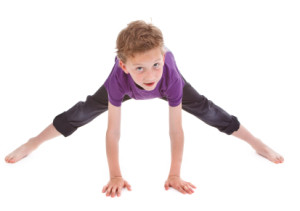Here’s a great post from a doctor in Virgina on exercise. I’ll also post a video on this subject in the next post.
I’ve been reading several studies on the benefits of exercise on academic achievement and concentration. The research is clearly saying that if you want a child to focus intently and perform well on tests, he or she should first take a physical education class. This issue has particular relevance for school districts looking to reduce or cut their physical education programs and teachers to save money.
Two studies in particular caught my attention. One involved school children in Italy who were given several different types of P.E. classes, as well as a typical lecture class. The classes were designed to see if physical exercise would make children less distracted in their subsequent class periods.
Just before and immediately after the classes, the children took a written test in which they had to pick out letters from long chains of symbols in a short period of time. The test is a good indicator of one’s ability to concentrate. The children were all healthy and none suffered from serious attention deficits.
The study was interesting because many children often find it difficult to stay focused on their lessons as the day wears on. In their discussion, the study’s authors noted that children “who undergo prolonged periods of academic instruction often reduce their attention and concentration.”
The children’s test scores improved after each of the physical education classes, especially a class that focused on endurance exercise. In that class, students kept moving throughout the 50-minute period by walking, running and skipping. Interestingly, the test scores did not increase as much after a 50-minute class in which they learned new skills with a ball, although concentration did improve over taking a lecture class.
Researchers speculated that asking the students to think too much induced “an excessive stress load” on their brains. Perhaps the mental break combined with physical activity is beneficial to the ability to later concentrate.
This study dovetails nicely with the second. In this study, lab rats were bred to have the symptoms of attention deficit hyperactivity disorder (ADHD). These rats show more nervousness and are less capable of settling down than typical rats.
They also can’t seem to cease their investigation of meaningless stimuli. When researchers shone a light into the rats’ cages, the rodents kept going to the glow, long after they should have learned it was unimportant.
The rats were then given access to a running wheel for three weeks and found that they altered their habit of incessantly going to the light. They studied it a few times, but then moved on, able to focus on more meaningful activities. Clearly, running helped the ADHD rats concentrate better.
The researchers noted there still is much to learn about which parts of the brain preferentially are affected by exercise. Still, the implications are encouraging and suggest exercise may help treat young people with ADHD and, more broadly, help children concentrate better in their lessons. It is time to start looking at physical education as not lost academic time, but as a means to scholastic enrichment.
If you like this blog post, please leave a comment below and tell me what you think of it. Also, I’m always open to ideas of any health topic that you’d be interested in so if you want to hear more about living pain free, wellness care for the family, fitness, etc, please comment below and I’ll send out more articles in those areas.
If you’d like to connect with Dr. Tompkins and Tompkins Family Chiropractic, Like Us on facebook, follow us on Twitter, or subscribe to our email newsletter where you will be automatically connected with the latest news and important health updates.


